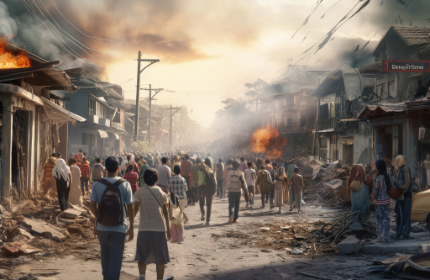From Crisis to Hope: AI-driven Programs Rescuing Children Worldwide
From Crisis to Hope: AI-driven Programs Rescuing Children Worldwide
The Global Crisis of Child Exploitation and Trafficking
Child exploitation and trafficking is a global crisis that affects millions of children worldwide. According to UNICEF, an estimated 152 million children are engaged in child labor, with almost half of them engaged in hazardous work. Additionally, the International Labor Organization reports that approximately 1.2 million children are victims of trafficking each year. These alarming statistics highlight the urgent need for effective solutions to combat this heinous crime.
Harnessing the Power of Artificial Intelligence to Combat Child Exploitation
In recent years, there has been a growing recognition of the potential of artificial intelligence (AI) in addressing complex social issues. AI has emerged as a powerful tool in the fight against child exploitation and trafficking. By leveraging advanced algorithms and machine learning, AI can analyze vast amounts of data, identify patterns, and detect potential cases of exploitation with greater accuracy and efficiency than traditional methods.
One notable example of AI-driven technology is the use of facial recognition software to identify missing children. The non-profit organization, Thorn, has developed a tool called Spotlight, which uses AI to analyze online advertisements and identify potential victims of trafficking. By comparing images of missing children with those in online ads, the software can help law enforcement agencies locate and rescue victims more quickly.
AI-Driven Programs: Transforming the Landscape of Child Rescue Efforts
AI-driven programs are transforming the landscape of child rescue efforts by enabling proactive intervention and prevention. For instance, the Child Rescue Coalition has developed an AI-powered software called Child Protection System (CPS) that scans the internet for known child pornography images. By analyzing the digital fingerprints of these images, CPS can identify and track individuals who possess or distribute child pornography. This technology has already led to the rescue of thousands of children and the arrest of numerous offenders.
Another AI-driven program making a significant impact is the Traffik Analysis Hub (TAHub), developed by IBM. TAHub uses AI to analyze vast amounts of data from various sources, such as social media, online marketplaces, and chat rooms, to identify potential trafficking networks and hotspots. This information is then shared with law enforcement agencies and NGOs, enabling them to target their efforts more effectively and disrupt trafficking operations.
From Despair to Hope: How AI is Saving Children’s Lives
The use of AI in combating child exploitation and trafficking offers hope in the face of an overwhelming crisis. By automating time-consuming tasks, such as analyzing data and identifying potential victims, AI allows law enforcement agencies and NGOs to allocate their resources more efficiently. This, in turn, leads to faster response times and increased chances of rescuing children from dangerous situations.
Moreover, AI-driven programs provide valuable insights into the patterns and trends of child exploitation, enabling policymakers and organizations to develop targeted prevention strategies. By understanding the root causes and risk factors associated with child exploitation, interventions can be designed to address these issues effectively and prevent future victimization.
In conclusion, the global crisis of child exploitation and trafficking demands innovative solutions, and AI-driven programs are proving to be a game-changer in this fight. By harnessing the power of artificial intelligence, we can transform the landscape of child rescue efforts, from crisis to hope. With continued investment and collaboration between technology developers, law enforcement agencies, and NGOs, we can save countless lives and create a safer world for our children. As Thorn’s CEO, Julie Cordua, aptly puts it, “Technology is not the silver bullet, but it is a powerful tool that can help us find the children who need us most.”




